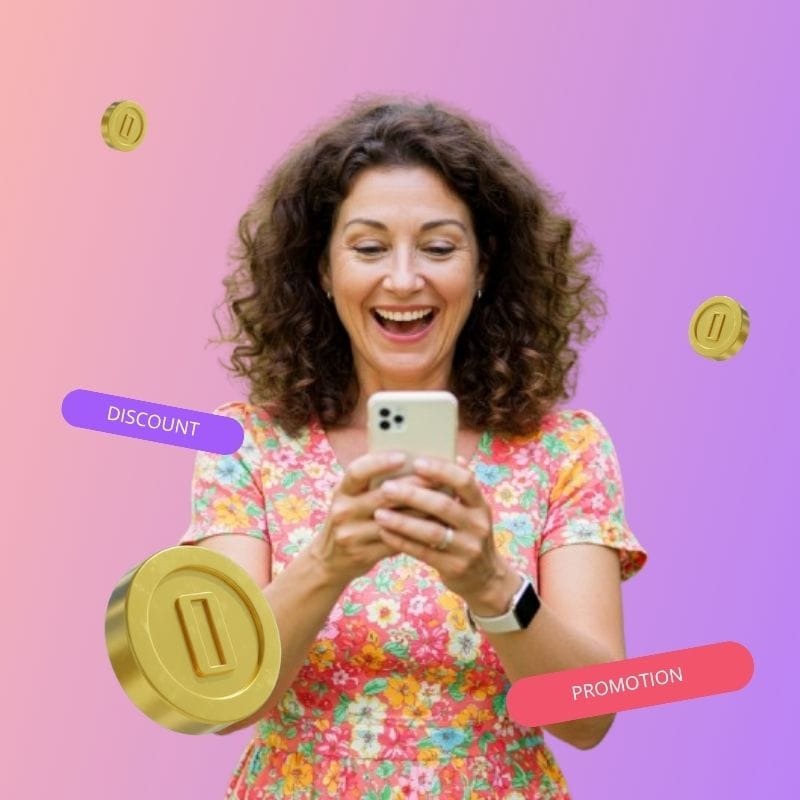Why is retaining customers more important than just looking for new ones?


Why is retaining customers more important than just looking for new ones?
On the other hand, investing in customer loyalty—that is, retaining and keeping current customers satisfied—can be more profitable, sustainable, and strategic in the long term.
Below are the reasons, benefits, and some strategies that make customer loyalty an essential practice for any business.
Loyal customers bring more value at a lower cost
– Repeat purchases: a loyal customer tends to return several times, which lowers the acquisition costs per unit sold. It is no longer necessary to spend as much on convincing them to try the product, because they know and trust the brand.
– Less conversion effort: Converting someone who already interacts with the brand is cheaper than attracting a new consumer from scratch.
– More stable income: Recurring purchases allow you to build a predictable revenue stream. Loyal customers generate a much higher lifetime value.
Word-of-mouth recommendations are powerful
Satisfied customers become promoters: they recommend the brand to friends, family, and colleagues. This “natural advertising” is more reliable than paid ads and represents a significantly lower cost. Loyal customers often become brand advocates who amplify the brand’s reach.
Loyalty programs can be profitable
– They don’t require large investments: points cards, digital coupons, or rewards for repeat purchases are accessible and effective.
– When well managed, they help reduce churn and improve retention.
– They also encourage frequent visits and maintain an active connection with the customer.
Improved customer lifetime value (CLV) and stability
– Building customer loyalty increases customer lifetime value (CLV), which is the total amount a customer spends during their relationship with the brand.
– This generates revenue predictability and allows for more confident planning, even in uncertain contexts.
Higher return than acquisition campaigns
Acquisition campaigns often involve high costs and low conversion rates. In comparison, investing in improving the current customer experience (service, incentives, benefits) often generates higher returns per unit invested.
Loyalty strengthens the brand
Loyal customers associate the brand with trust, quality, and added value. This relationship becomes a competitive advantage that is difficult to imitate. In addition, a solid loyalty program acts as a barrier to exit: customers stay because they perceive exclusive benefits that they will not easily find among competitors.

Keys to designing an effective loyalty strategy
Component:
– Customer knowledge
This involves identifying the most valuable customers and analyzing their behavior through data or CRM.
– Consistent experience
Ensure quality and consistency at all points of contact (sales, customer service, after-sales).
– Personalized communication
Segment messages and recommendations, avoiding sending the same thing to everyone.
– Measurement and monitoring
Analyze repeat customers, average spending, and churn rate.
– Integration with marketing
Connect loyalty with launches, cross-selling, and upselling.
Loyal customers not only buy more, but also help spread the brand organically. Many companies have managed to generate a significant percentage of their revenue from repeat customers, reducing their dependence on acquisition campaigns. For example, with the same budget allocated to acquisition, investing in loyalty could lead current customers to spend 20-30% more, increasing net margin.
When to continue attracting new customers
Building loyalty does not mean stopping attracting new customers. Acquisition is still necessary in certain cases:
– Expansion into new markets.
– Launching products or services.
– Seasons of high demand.
The important thing is to strike a balance: a solid base of loyal customers makes acquisition campaigns more effective thanks to the backing of reputation and recommendations.
Linkcard Loyalty: easy-to-create loyalty programs
One of the biggest challenges for businesses when considering a loyalty program is complexity: expensive platforms, technical configurations, and limited flexibility. With Linkcard Loyalty, that barrier disappears.
From the same ecosystem as your digital card, you can design a points program, VIP benefits, or personalized rewards in a matter of minutes. You don’t need technical knowledge or large investments: the idea is that any business, from a neighborhood café to a clothing brand or beauty salon, can reward customer loyalty in a simple and attractive way.
The key is that your customers access the program directly from your Linkcard, without extra downloads or complicated processes. This way, loyalty is naturally integrated into the experience of sharing your contact information and strengthening your digital presence.
In other words: creating a loyalty program with Linkcard is not an expense, it is a strategy to sell more and keep your customers close, with the ease of a couple of clicks.
Conclusion
Investing in customer loyalty is not only more economical in the medium and long term, but also brings more value: repeat purchases, recommendations, stability, and greater future profitability.
While focusing solely on attracting new customers may generate initial results, loyalty ensures lasting relationships that sustain business growth.




















